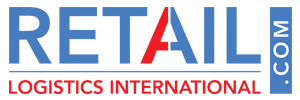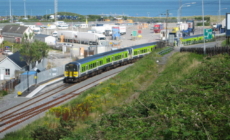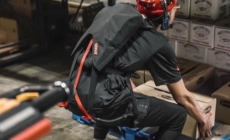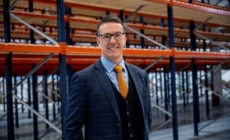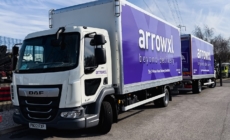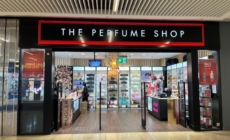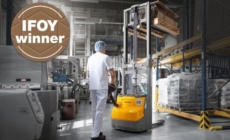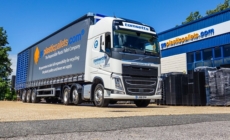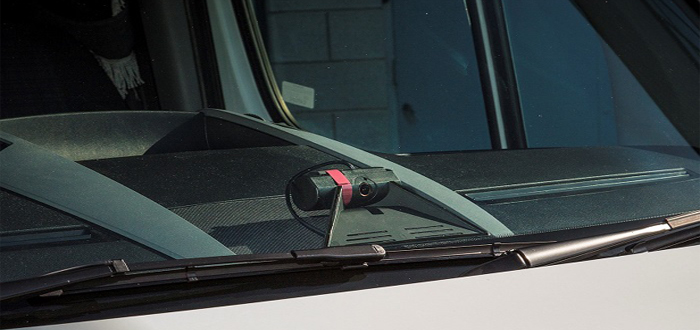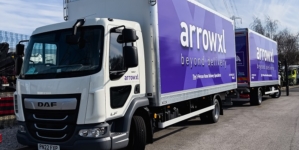-
ROSSLARE EUROPORT TARGETS HEALTH & SAFETY WITH CAMERA TELEMATICS PARTNERSHIP - 2 days ago
-
Landmark Study Reveals Wearable Robotics Significantly Boost Safety and Efficiency in Industrial Environments - July 24, 2024
-
Visku Tackle The Retail Seasonality Challenge One Pallet At A Time - July 22, 2024
-
KAMMAC AND BERGEN LOGISTICS STRENGTHEN FASHION & LIFESTYLE SERVICES IN THE UK - July 19, 2024
-
TENTBOX EXTENDS PARTNERSHIP WITH ARROWXL TO SUPPORT INCREASING DEMAND - July 17, 2024
-
The Perfume Shop improves customer journeys while driving profitability in partnership with Scurri - July 17, 2024
-
ZEROMISSION SECURES £2.3M ($3M) INVESTMENT TO ACCELERATE ELECTRIC FLEETS - July 16, 2024
-
BCMPA CELEBRATES SUCCESS OF 2024 CONFERENCE - July 15, 2024
-
Best of the Best: Jungheinrich Celebrates Triple International Award Win - July 12, 2024
-
GOPLASTICPALLETS.COM CALLS ON NEW CHANCELLOR RACHEL REEVES TO CONSIDER PLASTIC PACKAGING TAX REFORM - July 10, 2024
MAKING THE MOST OF CONNECTED CAMERA TECHNOLOGY REQUIRES JOINED-UP, MANAGED APPROACH CLAIMS INTELLIGENT TELEMATICS .
Commercial fleet operators will only unlock the true potential of 3G vehicle cameras by having appropriate processes in place that reduce exposure to risk and better control insurance costs according to Sam Footer, Director of Intelligent Telematics. Speaking at Willis Towers Watson’s (WTW) annual Transport Forum, he said that simply having access to video footage would not maximise the savings potential without taking a joined-up approach that takes advantage of driver behaviour monitoring, first notification of loss (FNOL) and proactive claims handling.
“While having a technology solution that is fit for purpose, it is equally important for commercial fleet operators to have access to the necessary resources to use the available data quickly and efficiently,” explained Footer. “Whether this is an internal function or via a fully-managed, third party solution, these companies need to make the most the ever-increasing amount of operational data they have access to.”
In particular, First Notification of Loss (FNOL) is increasingly seen as a way of reducing third party costs, improving claim liability defence and increasing fraud detection. However, to take full advantage of a connected camera solution it is essential to proactively monitor generated alerts and achieve Third Party Intervention (TPI). This should include a dedicated team to liaise directly with the driver following an incident and any third-party to offer support, capture details and organise any repair and car hire needs.
Using FNOL as part of a proactive claims management process offers a highly-effective means assessing liability and managing the claims life-cycle quicker and more accurately to reduce insurance costs. For example, figures taken from commercial fleet operators using its IT1000 and IT2000 3G vehicle cameras as part of a full-managed solution show an average saving of £1,860 per claim, as well as a 25 per cent increase in denial rate and a 45 per cent reduction in the average days to settle a claim.
“With spiralling insurance costs, commercial fleets are looking for effective ways of reducing exposure to risk and better controlling insurance costs. Connected technology does offer a means of achieving this, but will only deliver the desired results as part of an appropriately planned and managed approach,” concludes Footer.
The 2017 Transport Industry Forum, hosted by the Willis Towers Watson UK Land Transport Practice, was held at the Coventry Transport Museum on Thursday 12th October. The event, attended by more than 70 people made up of transport operators along with insurance, legal and health & safety professionals from across the UK, consisted of a series of presentations and interactive Q&A sessions based on the theme: Motor Risk Management – the importance of an engaged workforce and technology.
